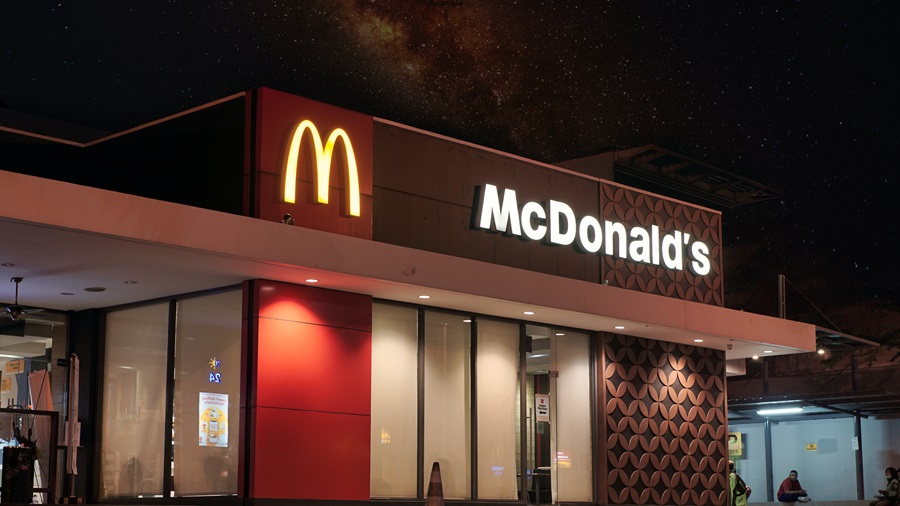The fast food category has been known to thrive in times of economic turndown. With the continuous disruptions of the 2020’s, many brands and categories have struggled to maintain their value, however fast food brands have proven resilient, much like during the 2008 financial crisis. Indeed, consumers tend to perceive fast food restaurants as a better value compared to traditional restaurants – and when consumers feel the need to tighten the purse strings, fast food brands do well.
This has been the case for McDonald’s, who rose to number five in the Kantar BrandZ Most Valuable Global Brands 2023 ranking, and number one within the fast food category. Through its strategic digital initiatives, customer experience themes, and commitment to expansion, this is the first time McDonald’s has ranked among the top five since 2014.
And although McDonald’s brand value fell by 3% to $191M in this year’s ranking, the decline is far less than the 20% decrease in the overall value of the top 100 brands in 2023, as well as lower than the total fast food category decline of 4%. Overall, the top 10 global fast food brands have increased in value by over 34% versus pre-pandemic levels, with McDonald’s exceeding this increase with 47% growth in brand value since 2019.
Becoming meaningfully different
In 2020 McDonald’s unveiled 3 core pillars to drive growth. Three years later, BrandZ data shows a more meaningfully different brand.
The first pillar was to maximize marketing through ‘creative excellence’. In 2020 McDonald’s launched its ‘Famous Orders’ campaign based on the premise that people are fascinated by what famous people choose as their order. Celebrities such as Kim Kardashian, Millie Bobby Brown, Whoopi Goldberg, Magic Johnson and American rapper Saweetie were tapped for the campaign. Building on this, in 2023 McDonald’s launched it’s “As Featured In” campaign, a new twist on “Famous Orders.” “As Featured In” celebrates all the instances where McDonald’s has appeared in TV and movies, including classics like Friends, Seinfeld and Coming to America, and new shows like the upcoming season of Marvel’s Loki.
The second element of McDonald’s strategy was to ‘find new ways to bring its core menu to life’. This included improving classic items as well as introducing new items to the menu such as the Chicken Big Mac and the McCrispy Chicken Sandwich. McDonald’s also added special edition ‘Famous orders’ to the menu as part of its creative campaign, and the latest menu item added in 2023, appropriately named the "As Featured In Meal."
The third focus area was to continue to grow digital, delivery, drive thru and development. In 2021, McDonald’s introduced its loyalty program which now has over 25 million active customers in the USA alone. The brand has also continued to improve its McDelivery service which it runs through partners such as DoorDash and Uber Eats.
BrandZ data shows that these initiatives have helped McDonald’s become a more meaningfully different brand to consumers, helping to support both volume share and justify price increases.

A new era for the fast food category
There’s no doubt that fast food brands are primed for continued expansion, including McDonald’s who plans to open 1,900 worldwide restaurants in 2023, with 400 new locations in the US. More broadly, however, fast food brands’ new design concepts have been implemented to reflect their new business reality. Digitalization, delivery, and takeaway have become dominant customer experience themes. According to McDonald’s, takeout orders (including those placed on mobile apps, drive-thru, and delivery) now comprise some 90% of all US sales, up from 70% before the pandemic.
With that overwhelming figure, McDonald’s has been experimenting with concepts like pick-up shelves; take out only restaurants with conveyor-belt delivery systems, separate waiting areas for delivery partners, and drive-thru lanes powered by AI chatbots. However these experimental concepts are just that – experimental. After some glitches with the AI-powered drive-thru’s, one could argue that a human-less interaction is less than ideal and digital first may not always be the best path forward.
Though delivery will likely remain a major sales channel going forward – it’s worth noting that amid rising food prices in the back half of 2022, many fast food brands saw an uptick in customers opting for pickup over delivery, in part to save a few dollars on delivery fees. This kind of price sensitivity is a reminder that for fast food brands, value perceptions should never stray too far from top of mind. In the face of inflationary pressures, fast food franchises are competing on value not only with sit-down restaurants (a comparison where they tend to come off better), but also with cooking at home, which is typically seen as more cost effective.
An opportunity for growth through sustainability
BrandZ data shows that McDonald’s lacks sustainability credentials among consumers in the fast food category. McDonald’s sustainability strategy includes moving to 100% renewable, recycled or certified sources for packaging by the end of 2025. The brand has already largely transitioned to paper-based packaging and has pledged reduce total emissions from its restaurants and offices by 36% by 2030. However, McDonald’s still uses disposable plastic for items such as lids and packets, and requires a staggering amount of meat for its menu items, which comes at a steep cost to the environment. With sustainability a small but important lever to drive both volume share and justify pricing, it may time for McDonald’s to push sustainability efforts further.
Explore BrandZ data for free
As McDonald’s continues to expand into digital initiatives and deliver convenience and value to consumers, the brand has been seeing a big payoff. There is still work to be done in the area of sustainability, and improving these efforts can help continued growth.
Kantar recently launched a new, free interactive tool using BrandZ’s wealth of data where you can see an overarching view of a brand’s performance. Discover your top brand equity indicators—and those of your competitors—in seconds with Kantar BrandSnapshot powered by BrandZ.

